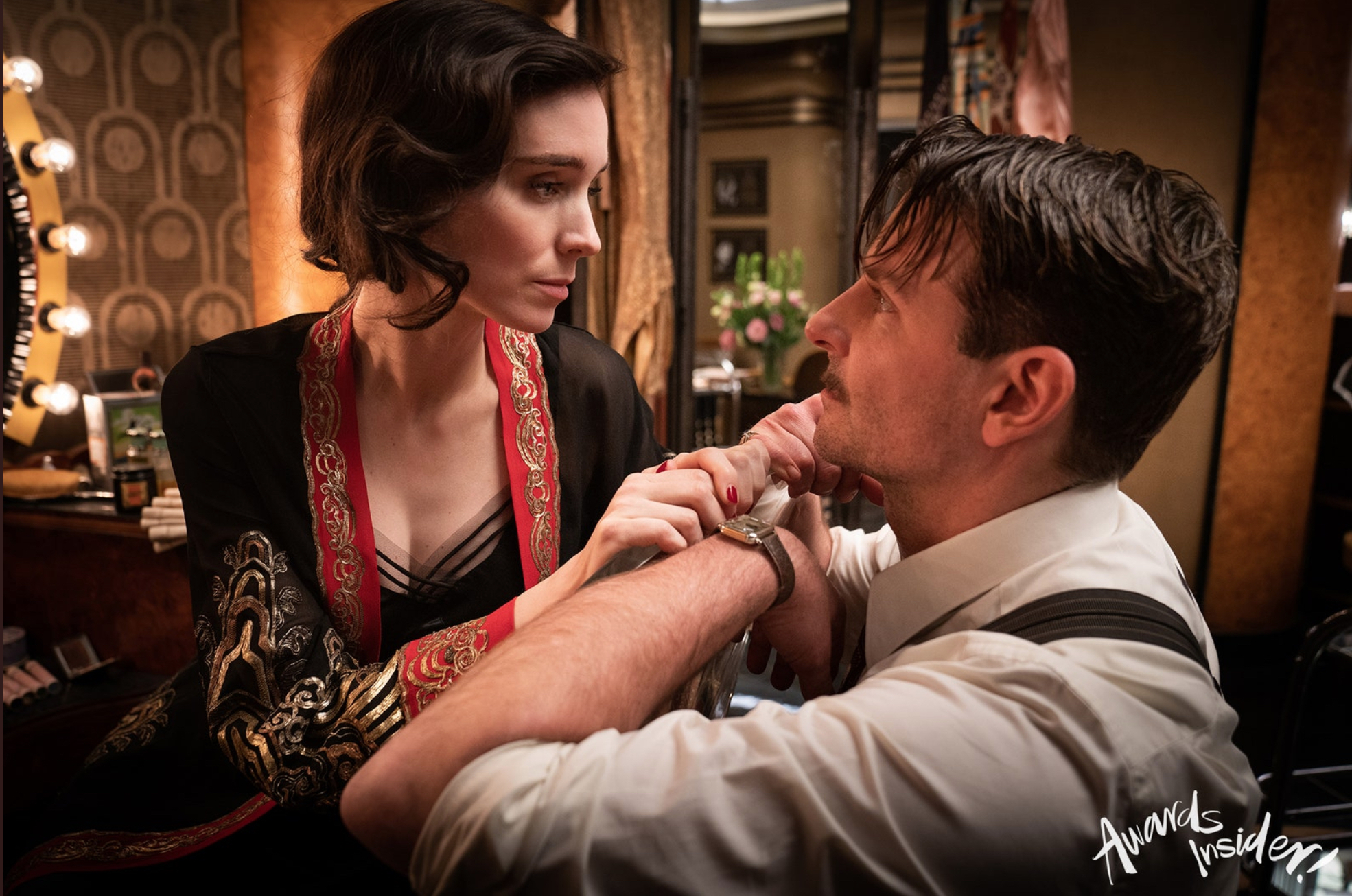HE’s #1 mantra: If a movie ends well, that’s half the ballgame. Let no one ever argue that Guillermo del Toro‘s Nightmare Alley (Searchlight, 12.17) doesn’t end well. It ends perfectly, in fact. It reiterates the basic film noir theme, which boils down to the main character fatalistically admitting that he’s doomed, and in fact has been doomed all along. He never had a chance, and his dark fate is so irrefutable that it’s funny.
Film noir basically says that none of us have a chance. Which we don’t if your definition of having a chance means escaping death. We’re all going to die. But if I had accepted this fatalistic, fuck-me doctrine when I was in my teens or 20s my life wouldn’t have worked out. So noirs are basically films with a bad attitude. They all say that noir protagonists are fucked and can’t “win” because they’re essentially self-destructive by way of some basic flaw or weakness, and that most of our dreams and schemes will never pan out.
Let no one say that Nightmare Alley hasn’t been masterfully composed — it’s all visually harmonized (the dp is Dan Laustsen) and exquisitely designed. Half of it radiates a rural travelling carnival vibe, the other half a snow-blanketed, pre-war urban (deco-moderne) gloom. And yet all of a piece…persistent and narcotizing and finally overwhelming.
HE to friend outside multiplex: “Yo…what are you seeing?”
Friend to HE: “Nightmare Alley. I’m a Guillermo fan, and I don’t care if it has no monsters.”
HE to friend: “I just saw it.”
Friend to HE: “And…?”
HE to friend: “Great cinematography and production design, lotsa gloom, good performances.”
Friend to HE: “But how is it?”
HE to friend: “You’re on your own, man. I’ll tell you this much — Bradley Cooper smokes 50 or 60 unfiltered cigarettes. Every damn scene he lights up, and it’s infuriating.”
When and if you watch Nightmare Alley (and I am recommending that you do) you need to accept from the get-go that Cooper’s Stan Carlisle is fucked — an asshole and a cruel hustler who’s determined to downswirl and self-destruct, and that how he manages to ruin his life as well as kill or maim those around him is just a matter of time, circumstance and opportunity.
But the ending, man…that ending is exquisite.
GDT: “The [William Lindsay Gresham] book was given to me in 1992 by Ron Perlman, before I saw the Tyrone Power movie, and I loved the book. My adaptation that I’ve done with [co-writer] Kim Morgan is not necessarily…the entire book is impossible, it’s a saga. But there are elements that are darker in the book, and it’s the first chance I have…in my short films I wanted to do noir. It was horror and noir. And now is the first chance I have to do a real underbelly of society type of movie. [There are] no supernatural elements. Just a straight, really dark story.”
Nightmare Alley is a resuscitation of 1940s noir melodrama with all the pulpy trimmings — a rural old-style carnival, fake mind-readings, geeks biting off chicken heads, a slimey snake-in-the-grass lead (Cooper) and secondary characters with names that scream out yokel origins — Clem Hoately, Pete and Zeena Krumbein, Ezra Grindle, Bruno, etc.
The script, co-penned by GDT and Kim Morgan, is based on William Lindsay Gresham‘s 1946 novel, which was immediately adapted into the renowned 1947 noir starring Tyrone Power.
We all understand that Guillermo and Kim’s basic idea was to remake the Power film, which was directed by Edmund Goulding, but to massage it in their own way by leaning on the novel. And yet each and every time a famous film is remade, the filmmakers always say that they were guided by the original book. They never, ever say that the initial film adaptation was the inspiration.
Born in 1914, Power was in his handsome-young-man prime (32 or 33) when he played Stanton “Stan” Carlisle in the Goulding film, and I think it’s fair to say that his youthful aura mitigated or modified Carlisle’s sleazy maneuverings. Cooper was 45 or so when he played the same character in the Del Toro version. (Silver Linings Playbook was eight years ago.) It’s a different thing when a guy who’s close to pushing 50 plays a doomed, duplicitous character; age often makes an actor look a bit weary, creased and compromised.
The 1947 original ran 111 minutes; Guillermo’s version run two hours, 19 minutes.
For those who know the ’47 original, here’s how the casting lines up:
Stanton “Stan” Carlisle (Bradley Cooper now, Tyrone Power then); Molly Carlisle/Cahill (Rooney Mara now, Coleen Gray then); Zeena Krumbein (Toni Collette now, Joan Blondell then); Dr. Lilith Ritter (Cate Blanchett now; Helen Walker then); Bruno (Ron Pearlman now, Mike Mazurki then); Ezra Grindle (Richard Jenkins now, Taylor Holmes then).
Honest question: How do you pronounce Dan Laustsen’s last name? I’ve tried eight or nine times and I can’t do it.


